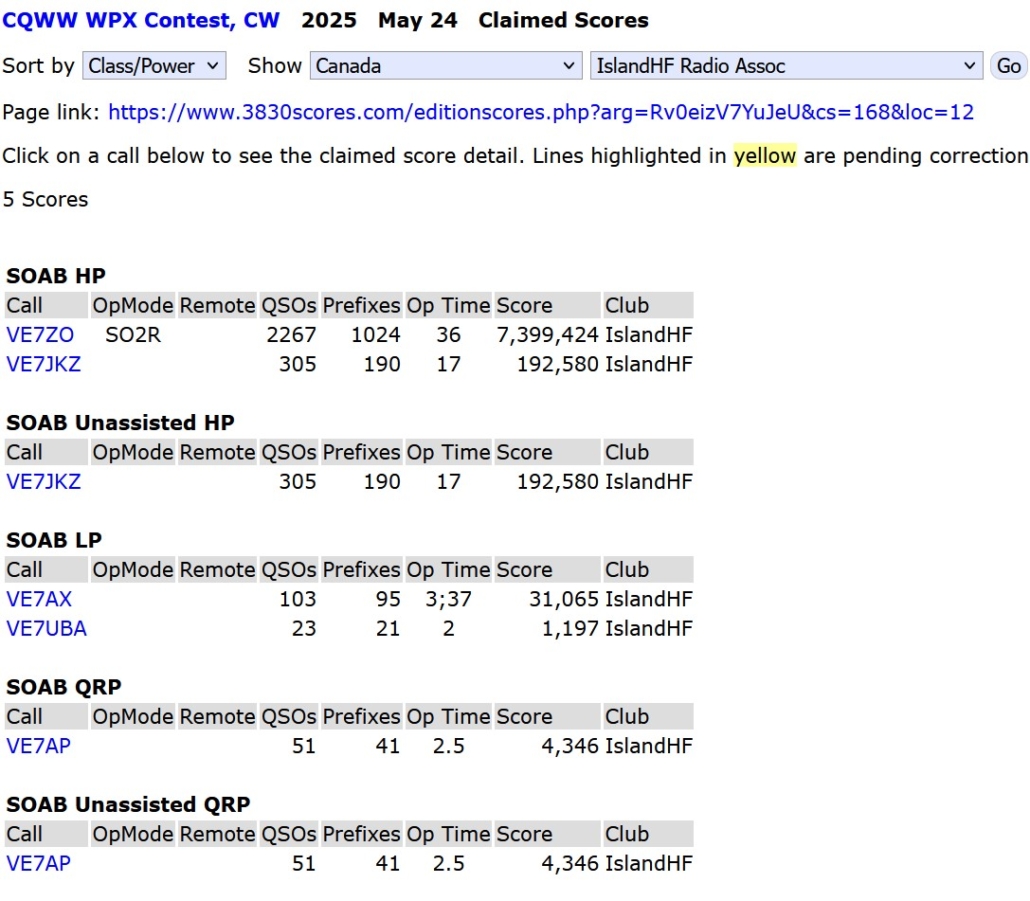2025 IslandHF Field Day Post Mortem
Despite our remarkably modest score, I think that IHF can declare that the FD event was a success for us! What can be better than playing with radios in the sunshine?
The concept of a QRP station running on batteries certainly simplifies the logistics, but we were definitely at a disadvantage to other entries that were running 100 – 1500 watts! Because of our low power signal, sending CQ on CW brought few responses; over 95% of our CW QSO’s were a result of “search & pounce” operations where our weak signal was less of a handicap.
Alan’s antenna was his version of a design that is commonly known as the “POTA Performer”, which relies on a resonant vertical whip and resonant elevated radials. When adjusted properly (using Alan’s built-in tape measures), this antenna provides a good match to 50 ohms without the use of an antenna tuner. Here is info on the original design: https://whiteriverradio.com/wp-content/uploads/2023/07/POTA-PERformer-Antenna-by-KJ6ER-2023-03-1-1.pdf
Andy was using a broadband antenna made by Chameleon. The secret is in the “magic” white module at the bottom (it looks like a loading coil, but isn’t) that they call the “Hybrid”. The hybrid is actually a uniquely designed step-up transformer that works with the radiating element (either an extendable whip or the end-fed wire) to provide an acceptable (but not perfect) match on most of the ham bands. It is actually possible to use this antenna without a tuner, but we were using tuners on both radios to ensure a good match. Brian and I both expressed a small degree of skepticism about the inner workings of the Hybrid, as we both believe that it introduces loss as part of it’s broadband matching function. Very little has been published about the Hybrid’s design, but about a year ago I saw an article written by a VK ham who had very carefully taken one apart, traced the schematic, and performed some loss measurements. As I recall, the losses were typically 3 dB or higher.
Thinking about next year, we might want to use the same QTH again. It had nearby washrooms and food, was easy to get to (for three of us) and was close to the water. It might be nice to have more power, but battery operation worked well this time! The bandpass filters worked fine, and we had no problems with cross-band interference or front-end overload.
Knocking off at 4 pm or earlier is ideal.
73, Roger



